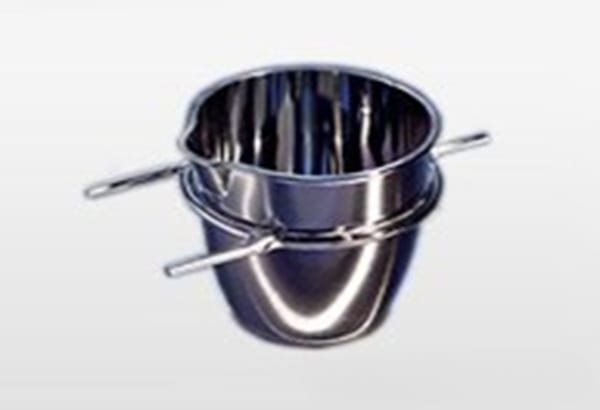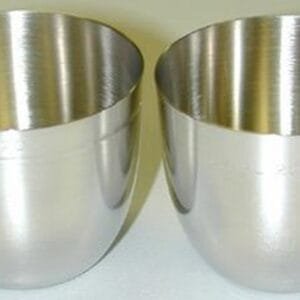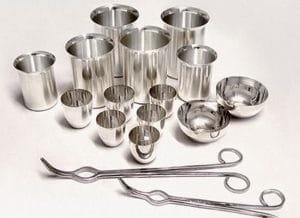Overview of Vulcan Platinum Crucibles & Molds
Vulcan Platinum Crucibles & Molds stand out as essential tools for laboratories, thanks to their unique properties. These tools are highly sought after for their chemical inertness, exceptional melting point, and ability to withstand extremely high temperatures. Their ductility, combined with strong resistance to corrosion and oxidation, makes them highly reliable for various scientific applications.

Vulcan Platinum Crucibles & Molds Specification
Size: Customized
Material: PtAu5 (95% Pt and 5% Au)
Purity: Pt ≥ 99.95%
All weights are in grams and all dimensions are in millimeters.
Vulcan Platinum Crucibles
| Code | Description | B | A1 | D | Weight |
| PT9601 | 3 pins | 38 | 34 | 20 | 25 |
| PT9602 | 3 pins | 38 | 34 | 20 | 45 |
| PT9603 | 3 pins on supporting ring | 38 | 34 | 20 | 44 |
| PT9604 | 3 pins on supporting ring | 38 | 34 | 20 | 45 |
| PT9605 | Reinforced rim, 3 pins on supporting ring | 38 | 34 | 20 | 44 |
| PT9606 | 3 pins | 30 | 40 | 30 | 20 |
| PT9607 | 3 pins | 30 | 40 | 30 | 33 |
| PT9608 | 3 pins | 40 | 43 | 30 | 25 |

Vulcan Platinum Molds
| Code | Shape | D2 | A2 | E | B | Weight |
| PT9609 | square | 29 | 31 | 41 | 3 | 27 |
| PT9610 | square | 32 | 34 | 41 | 3 | 31 |
| PT9611 | square | 34 | 36 | 51 | 3 | 45 |
| PT9612 | square | 39 | 41 | 51 | 3 | 45 |






Reviews
There are no reviews yet.